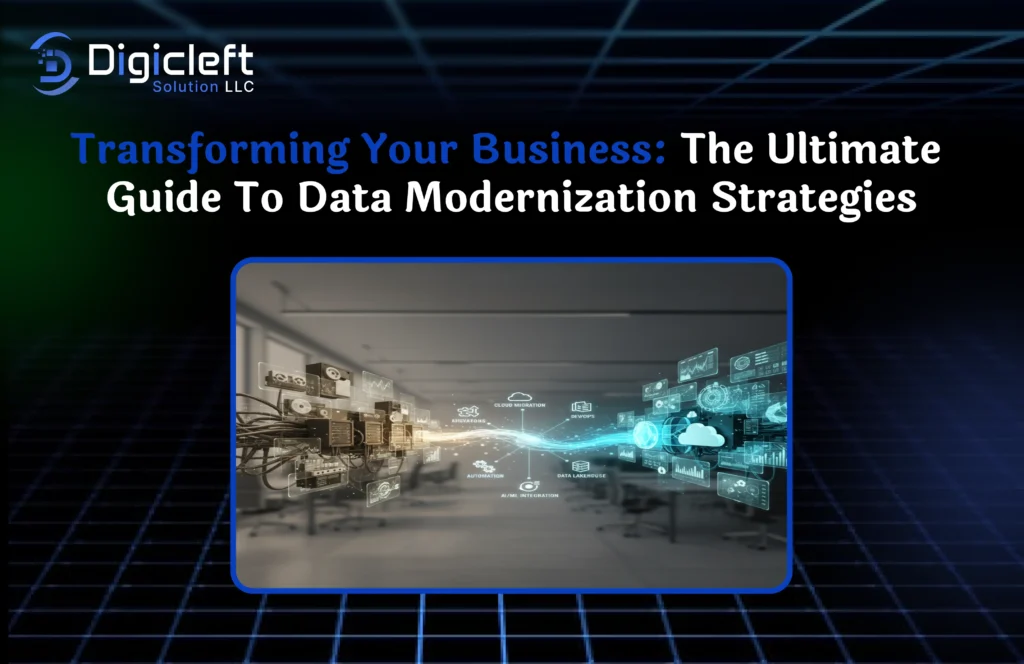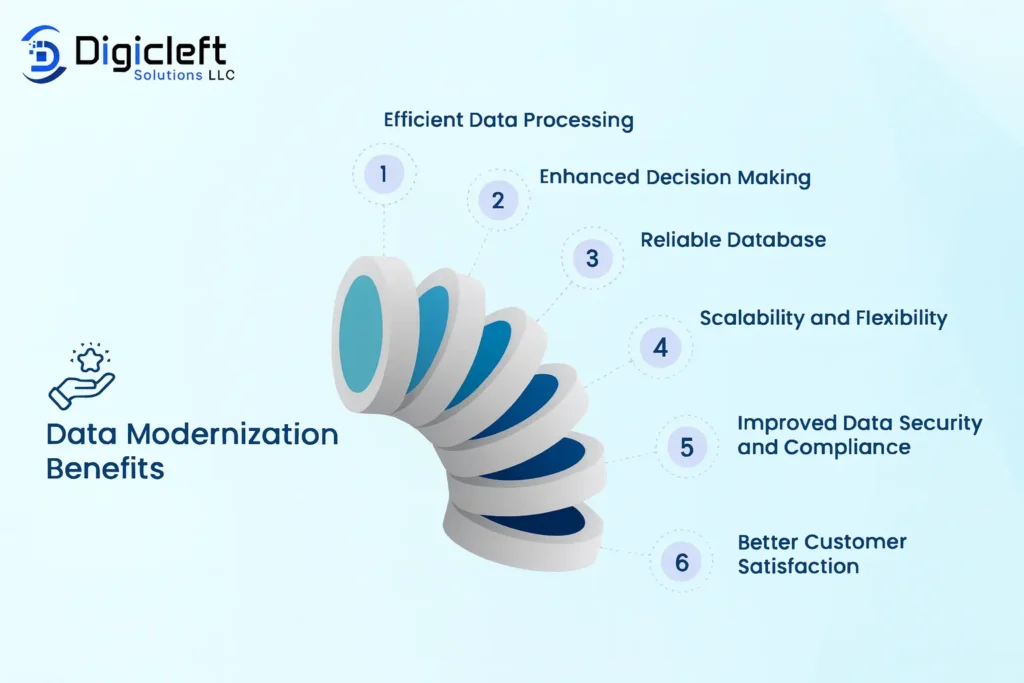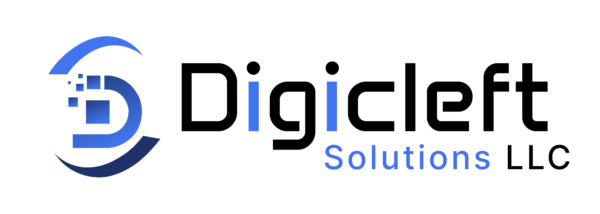
Imagine running a business with piles of information scattered across systems that can’t talk to each other. That’s what many organizations face today. The modern business world runs on data but outdated systems hold companies back. Enter data modernization the game-changing process that transforms how businesses manage, use, and leverage data for smarter, faster decisions.
In this guide, we’ll explore how data modernization can reshape your business strategy, improve operations, and help you stay ahead of competitors with insights from Digicleft Solutions, a leader in digital transformation and data-driven strategies.
What Is Data Modernization?

At its core, data modernization means upgrading legacy systems and moving data to modern platforms that are faster, flexible, and scalable. Think of it as renovating an old house you’re not tearing it down, but reinforcing it with smarter technology and better foundations.
The Business Case for Data Modernization
- Improved Efficiency: Streamlined data pipelines reduce manual effort and save time.
- Smarter Decisions: Real-time analytics empower teams to act instantly.
- Enhanced Customer Experience: Personalization thrives on clean, integrated data.
- Future Readiness: Cloud-first infrastructures prepare for AI, IoT, and automation.
Core Elements of a Data Modernization Strategy
- Modern Data Storage: Move from traditional databases to data lakes and cloud storage.
- Cloud Migration: Enables scalability, flexibility, and cost efficiency.
- Data Integration: Connect multiple platforms into one seamless ecosystem.
- Governance & Security: Ensure compliance with GDPR, HIPAA, and more.
- Advanced Analytics & AI: Power predictive insights and automation.
Steps to Building a Successful Data Modernization Plan
- Step 1 – Assess Current Systems: Understand your existing data sources and challenges.
- Step 2 – Define Clear Objectives: Set measurable goals like faster reporting or cost savings.
- Step 3 – Choose the Right Tools: Use platforms like Snowflake, Azure Synapse, and Databricks.
- Step 4 – Migrate and Transform: Move data with minimal disruption to operations.
- Step 5 – Optimize Continuously: Treat modernization as an ongoing process.
Overcoming Common Challenges
- Data Silos: Break barriers between departments.
- Budget Constraints: Focus on high-impact priorities first.
- Compliance Issues: Implement strict data governance frameworks.
- Workforce Resistance: Educate teams on the long-term benefits.
The Role of Cloud in Data Modernization
Cloud technology forms the foundation of modern data strategies. Platforms like AWS, Azure, and Google Cloud provide global availability, instant scalability, and enhanced automation making modernization smoother than ever.
How AI and Machine Learning Drive Modernization
AI automates data cleaning, detects anomalies, and generates insights that were once impossible. Digicleft Solutions integrates AI tools to revolutionize how businesses store, analyze, and utilize data turning information into actionable intelligence.
Real-World Examples
Global leaders like Netflix, Amazon, and Airbnb rely on modern data architectures for their success. Even small businesses can achieve remarkable results from improved marketing ROI to predictive supply chain analytics with partners like Digicleft Solutions.
Technologies Powering Data Modernization
- ETL Platforms (Informatica, Talend)
- Cloud Storage (Snowflake, BigQuery)
- Data Lakes (AWS S3, Azure Data Lake)
- Governance Tools (Collibra, Alation)
Measuring ROI in Data Modernization
- Reduced Data Processing Time
- Improved Decision-Making Speed
- Lower IT Costs
- Higher Customer Satisfaction
Case in Point: Businesses partnering with Digicleft Solutions report up to a 40% reduction in data processing time and 30% improvement in analytics accuracy.
The Future of Data Modernization
Expect automation, AI-driven decision-making, and sustainable infrastructure to define the next era. As companies move toward edge computing and real-time analytics, data modernization will remain the backbone of digital success.
Partnering with Experts
Going it alone can be risky. Partnering with experts like Digicleft Solutions ensures end-to-end modernization planning, migration, integration, and optimization all under one roof.
Conclusion
Data modernization isn’t just an IT upgrade it’s a business transformation. With the right strategy and partner, you can unlock agility, scalability, and profitability. The future belongs to data-driven businesses is yours ready to lead?
FAQs
Q1: What’s the first step in data modernization?
A: Assess your current infrastructure to identify gaps and opportunities.
Q2: How long does the process take?
A: Typically between 6 months to 2 years, depending on complexity.
Q3: Which industries benefit most?
A: Finance, healthcare, retail, and manufacturing especially those with large data volumes.
Q4: How does Digicleft support small businesses?
A: By offering scalable, cost-effective solutions tailored to your business goals.
Q5: What mistakes should be avoided?
A: Skipping planning, ignoring governance, and neglecting employee training. © 2025 Digicleft Solutions LLC | Empowering Businesses with Data-Driven Innovation


